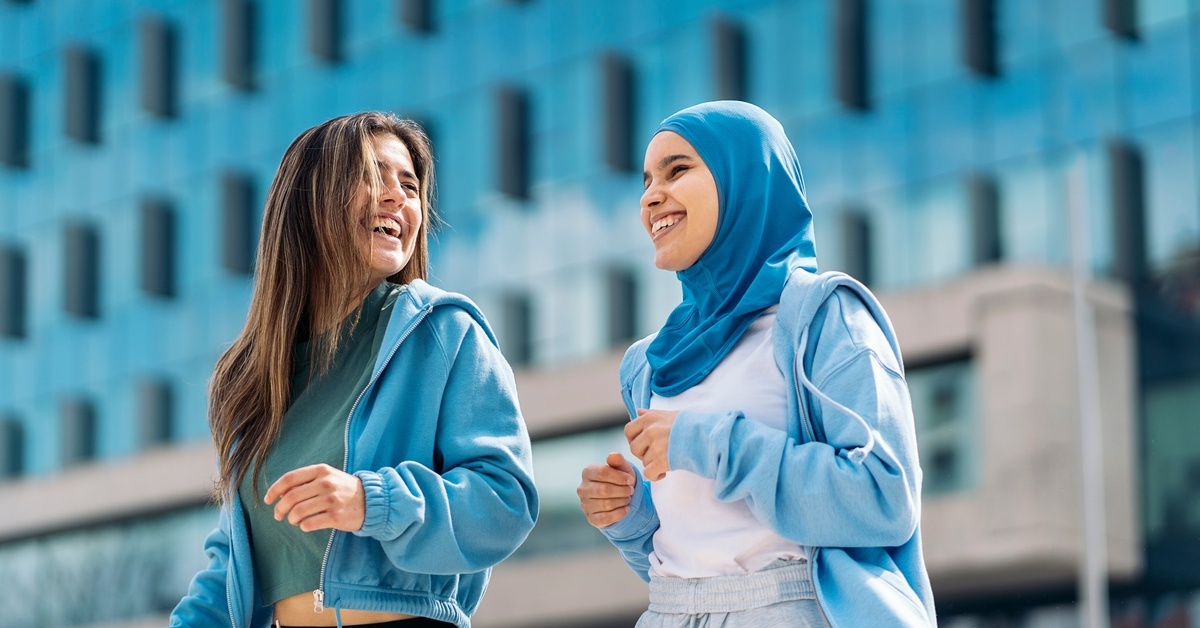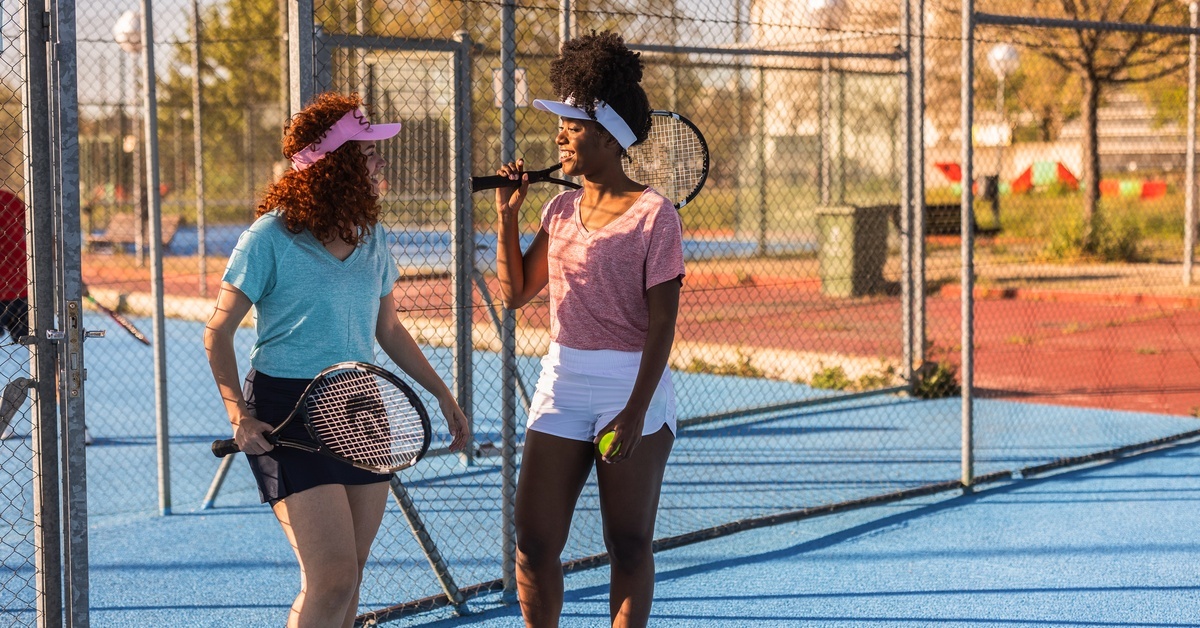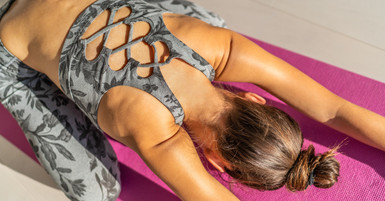Posted by Admin on Jul 29th 2025
Top Fabrics and Cuts for Women’s Activewear Comfort
Before you head out to your next yoga class or schedule an afternoon hike with your friends, pick an outfit for the occasion! Finding the right clothes for your workout will allow you to use your full range of motion and prevent injuries during strenuous activities. Discover what kind of fabrics and cuts feel comfortable for women’s activewear as you build your wardrobe full of stylish outfits.
Moisture-Wicking Fabrics Keep You Dry and Comfortable
Scratchy clothes can be uncomfortable, especially if you’re working up a sweat at the gym. When you engage in physical activity, the right materials will help you regulate your body temperature rather than trap moisture against your skin.
Synthetic Blends Offer Superior Performance
Polyester and nylon combinations create the most effective moisture-wicking properties in modern activewear. These synthetic materials pull sweat away from your skin and transport it to the fabric’s outer surface, where it can evaporate quickly. Polyester is a durable material and maintains its shape even after countless washes, while nylon is more flexible and offers a softer feel.
Many manufacturers combine these materials with small amounts of spandex or elastane to create garments that move with your body during dynamic activities. If you’re looking for a comfortable pair of leggings or a sports bra, these fabrics work best for your fitness outfit.
Merino Wool Provides Natural Temperature Regulation
If you’re heading out on a morning run, Merino wool offers unique advantages. This fiber naturally regulates body temperature, keeping you warm when it’s cold and cool when it’s hot. The fiber’s natural crimp creates tiny air pockets that provide insulation while still allowing moisture to escape.
Bamboo Fiber Delivers Eco-Friendly Comfort
For those looking for more organic materials, bamboo fabric naturally wicks moisture and provides antimicrobial properties that prevent odor buildup. Bamboo fiber feels incredibly soft against the skin and offers natural UV protection, which works especially well for outdoor activities. Even after a long workout session, the fabric maintains its shape and becomes softer with each wash.
Strategic Cuts Enhance Your Range of Motion

Even with soft, plush fabric, the right workout outfit won’t feel comfortable unless it shapes well to your body. Well-designed garments accommodate your body’s natural movements while providing appropriate support and coverage.
Athletic Fit Balances Comfort and Function
Athletic fits offer a flexible silhouette that reduces bulk without being restrictive. These cuts typically feature slightly tapered legs on pants and a fitted torso on shirts and tank tops. Athletic fits work well for most body types and activities because they provide enough room for movement while still having a flattering shape.
Compression Cuts Support Muscle Recovery
Compression activewear applies gentle pressure to specific muscle groups, which can improve circulation and reduce muscle fatigue during and after exercise. Compression leggings and tops use graduated pressure that’s tighter at the extremities and gradually loosens toward the core. Many athletes find that compression garments help them feel more stable and supported during high-impact activities.
Relaxed Cuts Prioritize Unrestricted Movement
Relaxed cuts work best for activities that require maximum range of motion, such as yoga, Pilates, or dance. These garments offer more room through the hips, thighs, and arms, and relaxed cuts often feature drop shoulders, wider leg openings, and longer hemlines that won’t ride up during deep stretches or inverted poses.
Seam Placement Prevents Chafing and Irritation
Along with the fabric and cut of your women’s activewear, the seam placement can be the difference between a comfortable workout and one plagued by irritation. Modern activewear designers place seams strategically to minimize friction points and improve the garment’s durability.
Flat Seams Reduce Friction Points
Flat seams lie completely against the skin rather than creating raised ridges that can cause chafing. This construction method joins fabric pieces by overlapping them and stitching them together with a specialized machine that creates a smooth seam.
Flat seams work particularly well in areas prone to friction, such as the inner thighs, underarms, and along the torso. Many high-end activewear brands use flat seams exclusively because they provide superior comfort during long workouts.
Seamless Construction Eliminates Irritation
Seamless garments use circular knitting technology to create entire pieces without any seams at all! By constructing the material in this way, this eliminates potential friction points and creates a smooth, second-skin feel.
Seamless bras and underwear work particularly well for sensitive skin types or during activities that involve a lot of movement. Without the extra seams, this also showcases a smoother silhouette under fitted clothing and reduces the likelihood of visible lines.
Ergonomic Seams Support Natural Movement
Designers craft ergonomic seams to follow the body’s natural contours to support a full range of motion. This makes them perfect for activities that demand flexibility and dynamic movement.
For instance, raglan sleeves in tops feature diagonal seams that run from the neckline to the underarm, allowing your shoulders to move freely. Similarly, gusseted seams in leggings or shorts include extra fabric in key areas, like the crotch, to prevent restriction and boost durability. This intentional seam placement gives you a wide range of motion during every workout.
Fabric Weight Impacts Performance and Comfort

Don’t add extra weight if you don’t need to! Understanding how different fabric weights perform in various conditions helps you choose the right garments for specific activities.
Lightweight Fabrics Excel in High-Intensity Activities
Lightweight fabrics, typically weighing less than 150 grams per square meter, provide breathability and mobility. These materials work best for activities that work up a sweat, such as running, cycling, or high-intensity interval training.
Lightweight fabrics dry quickly; however, they may be less durable than heavier alternatives and might not provide adequate coverage for all activities. If you’re working out in colder conditions, make sure to layer up!
Medium-Weight Fabrics Offer Versatile Performance
Medium-weight fabrics, ranging from 150 to 250 grams per square meter, offer the best balance of durability, comfort, and performance for most activities. These materials work well for strength training, yoga, hiking, and general fitness activities. They typically last longer than lightweight alternatives and provide better coverage and opacity.
Heavy-Weight Fabrics Provide Maximum Support
Heavy-weight fabrics, over 250 grams per square meter, work best for activities in cooler conditions or when you need maximum support. Heavy-weight leggings provide excellent coverage and compression, so many women wear them for activities like weightlifting or outdoor winter sports. While they may feel less breathable than lighter options, many heavy-weight fabrics incorporate moisture-wicking technology to maintain comfort.
Staying active doesn’t mean you have to wear dull, loose clothing during your workout sessions. To find stylish and practical women’s activewear, browse our collection of women’s apparel and Yeager’s Sporting Goods! With our wide variety of sizing, color, and design options, you’ll find the perfect garments to upgrade your wardrobe and greet each workout with comfort and style.

